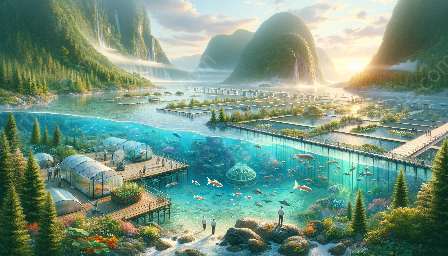As an important aspect of aquaculture and fisheries science, hatchery production plays a significant role in ensuring sustainable and efficient fish and shellfish production. This comprehensive guide will delve into the techniques, challenges, and impact of hatchery production while exploring its compatibility with applied sciences.
The Importance of Hatchery Production
Hatchery production is a key component of aquaculture, as it involves the artificial spawning and rearing of aquatic species in a controlled environment. This process enables the mass production of fish and shellfish for commercial and conservation purposes, contributing to food security, economic growth, and conservation efforts.
Techniques of Hatchery Production
Hatchery production encompasses a range of techniques aimed at maximizing the reproductive potential of aquatic species. These techniques include induced breeding, egg incubation, larval rearing, and fry production. Induced breeding involves the manipulation of environmental cues, such as temperature and photoperiod, to simulate spawning. Egg incubation involves the careful management of water quality, temperature, and oxygen levels to ensure the successful development of eggs. Larval rearing focuses on providing the appropriate nutrition and environmental conditions for the newly hatched larvae to thrive, while fry production involves the rearing of juvenile fish until they are ready for stocking or grow-out.
Challenges in Hatchery Production
Despite its importance, hatchery production presents several challenges that require careful consideration. One of the major challenges is the genetic diversity and integrity of cultured stocks. Inbreeding and genetic drift can lead to decreased fitness and adaptability in cultured populations, affecting their overall productivity. Additionally, disease management is a critical concern in hatcheries, as the high stocking densities and environmental conditions can promote the spread of diseases. Implementing biosecurity measures and disease monitoring protocols is essential to mitigate these risks. Furthermore, achieving optimal growth and survival rates in the hatchery environment requires a thorough understanding of the species-specific requirements and behavior, posing a challenge for hatchery operators.
Impact of Hatchery Production
The impact of hatchery production extends beyond the realms of aquaculture and fisheries science and is closely tied to applied sciences. By supporting the sustainable production of fish and shellfish, hatcheries contribute to the overarching goals of environmental conservation, biodiversity preservation, and ecosystem restoration. Furthermore, hatchery research and innovation drive advancements in biotechnology, genetics, and aquaculture engineering, enhancing the scientific understanding and technological capabilities in applied sciences. The continuous improvement of hatchery techniques and technologies also aligns with the broader objectives of sustainable development and resource management, making it a pivotal aspect of applied sciences.
Conclusion
Hatchery production plays a vital role in aquaculture and fisheries science, offering solutions to meet the growing demand for fish and shellfish while addressing conservation and scientific challenges. Understanding the techniques, challenges, and impact of hatchery production is key to developing sustainable and innovative approaches that uphold the principles of applied sciences.

